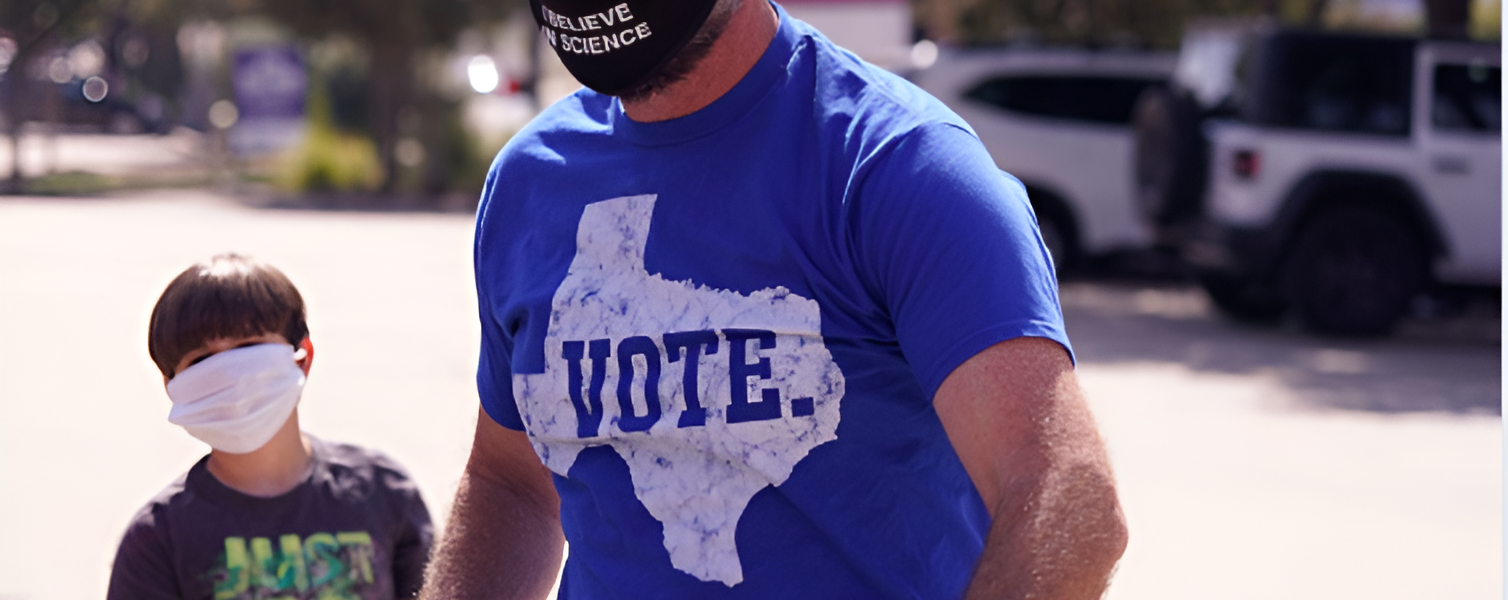
Late last month, in the middle of Odessa, Texas, a jarring scene unfolded outside the Ector County Democratic Party headquarters. In front of the dusty office shared with the town’s first-ever Hispanic attorney were five cars. Two of them were hybrids – a rare enough sight in deep-red West Texas, where pickups rule the roads. Inside, the vehicles were the subject of discussion as Domino’s pizza awaited volunteers returning from morning canvassing shifts.
“That red Prius is bold,” said Hannah Horick, chair of the Ector County Democratic Party. “I had a friend with a car like that and an Obama sticker who got run off the road. A Fiat? No chance.”
The Prius belonged to David Logan, a data analyst for Jon Mark Hogg, the Democratic candidate for Texas’ 11th Congressional District. Together, Logan and Horick studied a wall map of Odessa, their campaign’s strategy meticulously plotted with pins marking precincts, churches, and target neighborhoods. In one of the reddest districts in the country, they were fighting to chip away at the GOP’s dominance and help turn Texas blue — a long-elusive goal for Democrats.
A Shift in Strategy
For years, the Democratic playbook for flipping Texas relied on energizing urban voters and suburban swing districts. While demographic changes in cities and suburbs have put the state in play, that strategy alone hasn’t yielded statewide victories. This year, Democrats are expanding their approach, targeting even the most Republican-dominated areas like Odessa to narrow GOP margins.
The idea isn’t to win in these rural counties — it’s about reducing Republican leads just enough to tip statewide races. In Ector County, where Hillary Clinton garnered just 28% of the vote in 2016, Beto O’Rourke improved slightly with 30% in 2018. This year, Horick is aiming for 35%, focusing on increasing Hispanic turnout and persuading O’Rourke voters who backed Donald Trump in 2016 to return to the Democratic fold.
“Our goal is to drive turnout in Hispanic neighborhoods from 35% in 2018 closer to 50% this year,” Horick said, pointing to precincts indicated by blue blocks representing heavily Democratic Hispanic communities. Meanwhile, red-striped precincts reveal areas where voters did choose Trump in 2016 but went for O’Rourke two years later—very fertile ground for persuasion.
Boots on the Ground
On a Saturday morning, Horick, bolstered by masks and voter registration cards, and volunteers fanned across Odessa’s neighborhoods, leaving door hangers and speaking to residents. By the end of the weekend, they had handed out more than 2,000 voter registration cards. Elsewhere in West Texas, other Democratic organizers were hitting the ground, energized by new levels of coordination between local, state and national campaigns.
For the first time in years, the Texas Democratic Party is spending money on rural outreach, placing ads in those areas and hiring more organizers. Horick and Logan recently went to Austin to pick up campaign materials, a journey they said they could have avoided if the logistics had been better. Still, they were glad to finally have resources to back their efforts.
“To win statewide, Democrats must dominate urban areas, compete in the exurbs, and shrink Republican leads in rural areas,” said Matt Angle, founder of The Lone Star Project, a Democratic PAC. “In 2018, Beto O’Rourke hit his urban and suburban targets, but Ted Cruz’s massive margins in small towns and rural areas saved his Senate seat.”
Republicans on Edge
Early voting in Texas has mushroomed to historic highs, confounding political analysts with the way it has grown so unexpectedly. Cook Political Report considers the state a toss-up and it appears that the Republicans do sense that.
An unusual level of GOP activity caught Logan’s attention in Odessa. “Republicans have spent $405,000 on ads in this district,” he said. “Normally, they don’t bother. They’ve always relied on the county party. That tells me they’re worried.”
A Long Road Ahead
Democrats acknowledge the uphill battle in places like Odessa, but the effort is about playing the long game. Even marginal gains in rural areas could help Democrats finally flip Texas.
For now, Horick, Logan, and their small but determined team keep pushing, driven by the hope that their work on the ground could be the difference-maker in an election where every vote counts. As Horick said with a smile, glancing at the red Prius outside, “Sometimes boldness pays off.”





